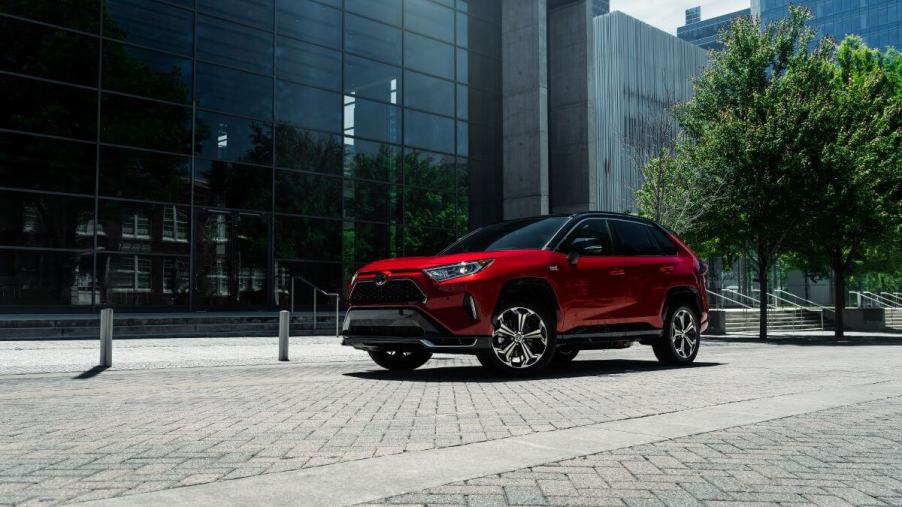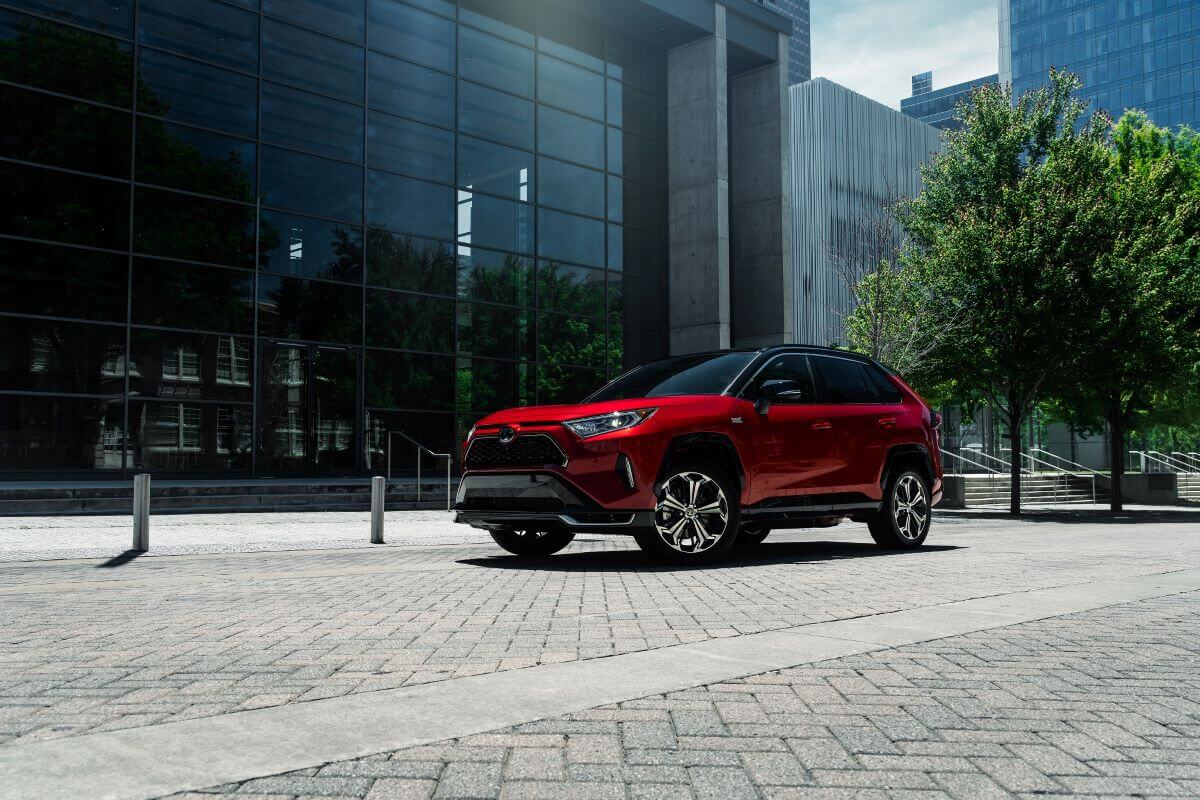
Is a Tesla Model Y and Toyota RAV4 Prime Comparison Even Fair?
The 2023 Tesla Model Y is slowly moving into a wider field of competition. Alongside electric vehicle subsidies, Tesla continues to make price cuts across the board. Its fast-selling SUV is no exception, and it’s making big waves in the EV space despite rapidly maturing competition from established automakers like Toyota.
Speaking of Toyota, its RAV4 Prime continues to be the best-selling SUV in the United States. It’s often the first suggestion that comes up as an alternative to the luxurious Model Y. But is the association between the two cards actually fair to make in the first place?

The Tesla Model Y and the Toyota RAV4 are two of the best-selling SUVs
The Model Y is a fully-electric luxury SUV, putting it in a different category than the accessibly-priced RAV4 line. According to GoodCarBadCar, it sold 85,000 in the first quarter of 2023. That’s just barely ahead of the RAV4, at 84,704. Second quarter numbers are still inconclusive, although the current reported sales have the RAV4 retaking the lead for now.
Tesla, often plagued by issues shipping enough cars, seems to have a much stronger grasp on keeping the Model Y in high circulation. Between that, and the lowering prices of their luxury EVs, it makes for an alluring option for anybody looking for EVs.
Toyota, as ever, has a hold over the mainstream SUV market. But the surge in interest for the Model Y, bolstered by EVs being increasingly normalized as a standard option for new car buyers. Does this spell trouble for the RAV4?
Tesla Model Y/Toyota RAV4 comparison
A proper comparison between the 2023 Model Y Long Range AWD means taking a closer look at a specific RAV4—the 2023 Prime XSE. They’re both automatic, all-wheel drive SUVs, in a similar compact crossover size. The core difference is Toyota’s gas/electric engine, compared to Tesla’s total focus on all-electric engines.
The biggest differences are in handling, and the interior. The XSE’s strut suspension system, in contrast with the Y’s double wishbone design, leads to a lesser overall driving experience in the RAV4. The Model Y also pulls out ahead in horsepower: 219 HP for the RAV4, 425 HP for the Y.
So what about price? The Prime XSE comes it at around $45,460, not substantially lower than the Y at $52,990. With Tesla prices trending down, thanks to two drops in 2023 alone, that gap could close even further. Does that make Tesla the clear choice for crossover SUV buyers in 2023?
Is it fair to compare the Model Y to the RAV4?
The most comparable RAV4 for the Model Y is the Prime XSE—and the reasoning goes beyond that hybrid engine. The base RAV4 starts at $28,275, and is in a different class from the Model Y entirely.
Toyota is squarely targeting the mass market for much of the RAV4 line. It’s not far to compare the Japanese automaker’s best-selling versions of its popular crossover with a vehicle designed from the ground up as a luxury SUV.
But the Prime XSE trim in particular is another story. Torque News reports that the Model Y has some issues compared to other luxury cars, namely the mediocre interior. Tesla also opts for proprietary software, while Toyota supports universal features like Android Auto and Apple CarPlay.
And of course, there’s the biggest issue: convenience. A hybrid engine always has gasoline as a fallback. Tesla’s batteries can take up to an hour to reach a full charge, making some buyers question whether EVs are a good fit for their lifestyle.
Comparing the 2023 RAV4 Prime XSE and the 2023 Model Y is completely fair, despite the Prime not technically being a luxury car or a fully electric car. Some of the deficiencies of the Model Y, and Tesla’s vehicles in general, close the gap somewhat. It’s a matter of taste, and driver needs, that makes one the preferred choice over the other.


